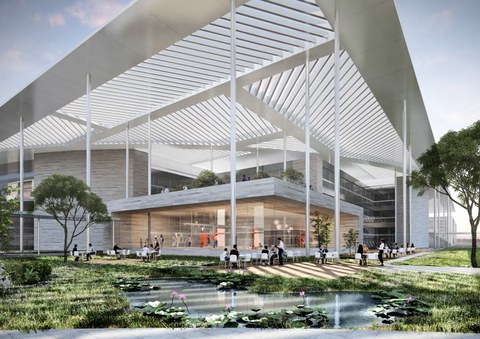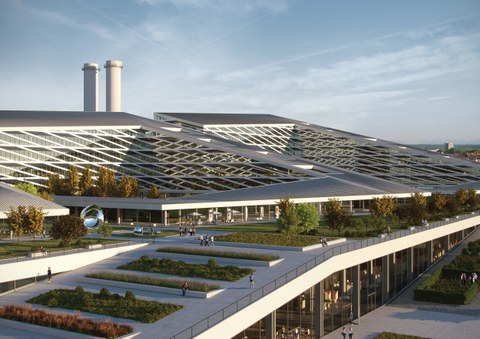LAB - Living Art of Building
In 2021, a team of initiators led by Prof. Curbach from the Institute of Concrete Structures took part in the BMBF competition for a large-scale research center to support structural change in Lusatia with the proposal to establish a new type of construction research center "Lausitz Art of Building". By the end of 2023, it was clear that the research center would be established in Lusatia under the new name LAB - Living Art of Building.
The multi-year construction of the LAB is set tobegin in mid-2024. After the construction phase, a total of around 1,250 scientists will conduct research and development in laboratory facilities that are unique in the world. This would make the LAB the largest research center of its kind. Close cooperation with industry will create up to 40,000 jobs in and around the LAB in the long term.
The situation today
We are consuming and overexploiting the earth's resources and changing them massively. The consequences are climate change, scarcity of resources, natural disasters, hunger, flight and poverty.
The construction industry is heavily involved in these developments. In 2018, it accounted for 5.3% of nominal gross value added in Germany, but is responsible for around 25% ofCO2 emissions and consumes around 40% of the energy generated. This discrepancy alone should lead to enormous productive activities. However, research receives very little funding. In view of this growing world population, we will not be building less, but more. Contrary to this, we must radically reduce resource consumption andCO2 emissions. It is therefore obvious that we will have to build completely differently in the future, not just marginally, but fundamentally.
Due to the enormous leverage effect, a significant intensification of research in the construction sector is therefore one of the most important tasks for the future, both nationally and internationally, with extremely great significance for society as a whole. There is an acute need for action.
A construction research center in the heart of Lusatia would be an important first step towards meeting these challenges and ultimately solving them.
Looking ahead
Future work in the construction industry must focus on the needs of people and society with regard to the built environment:
- sustainable, climate-neutral
- resource-conserving, recyclable at all levels (buildings, components, materials)
- durable and easy to repair
- variably usable, changeable in use
- aesthetic, safe and valuable (in the sense of "creating value")
- humane (globally conceived)
- human-oriented, respecting the human scale
- Considering life in all age groups
The mission
The buildings of the future will be designed and built using neither the materials nor the methods we know today. Instead, they will be planned, designed and calculated using artificial intelligence methods, manufactured in a resource-efficient manner, equipped and operated with AI-supported building technology, monitored and controlled with highly sensitive sensors and accompanied by a digital twin. To achieve this, we need to gain knowledge on a large scale - towards a completely different way of thinking about building than we do today.
In view of the increasing use of renewable energies and their storage, we can assume that the energy problem will decrease over time, while the problem of resource utilization will increase due to the limitation of matter. As the construction industry is one of the largest consumers, we need to be prepared for this and initiate a resource-efficient material evolution. In this respect, an important goal is for each building to have as long a useful life as possible, either with a long life and multiple uses, or with multiple lives where any large or small parts are reused. This reuse and recycling is dealt with on the scales of structure, component and material.
This also applies analogously to all infrastructure structures such as bridges, tunnels, roads and hydraulic structures, where the usage parameters are optimally determined, e.g. by digital systems, in order to create optimal conditions for users and the environment both locally and on a large scale (avoidance ofCO2-generating traffic jams, variable use of lanes, etc.).
Further information: https://living-art-of-building.org/
Information for journalists:
Sandra Kranich
Phone: 0351 484-56714
Sandra.K ranich@tu-dresden.de


